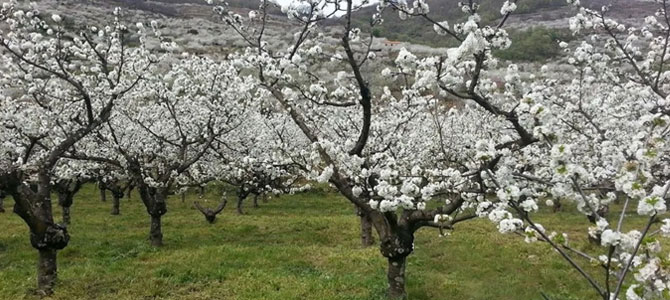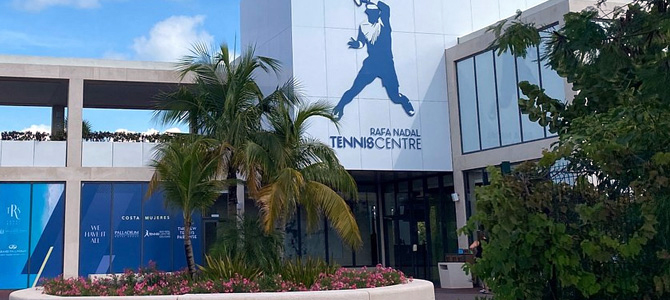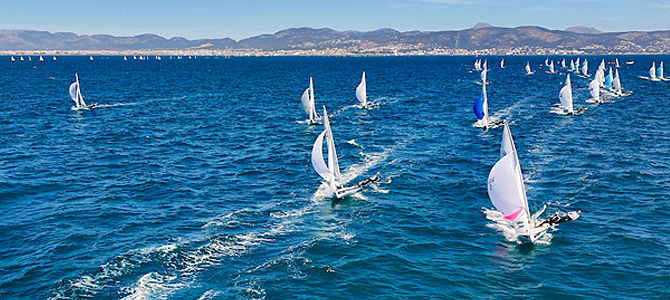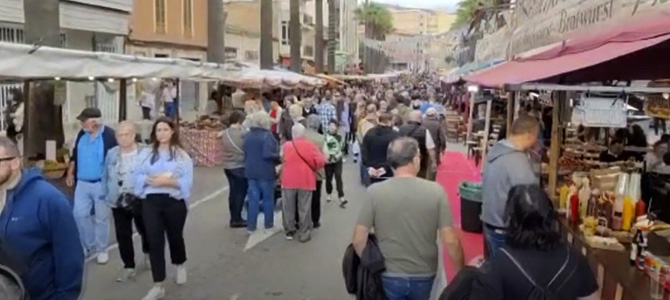The roots of the Carnival of Cadiz
The Carnival of Cadiz has its origins in the 16th century, when Italian merchants began to frequent the city’s port, which was the main point of entry from America. At that time, Cadiz was a very important city with strong commercial ties to the ports of Italy. This is how elements of the Italian carnival were adopted, such as masks, masks, streamers and confetti, which today are an essential part of the Cadiz tradition.
The Carnival of Cádiz is famous all over the world for being a festival that is lived intensely in the streets. For days, the fun never stops, and the city becomes an open stage where originality and people’s participation are the real protagonists. Every corner of Cádiz is filled with laughter, chants and good humour, creating a unique atmosphere.
If you want to enjoy this celebration, it is essential that you look for accommodation in Cádiz in advance as it is one of the most awaited events of the year and attracts thousands of visitors from all over the world.
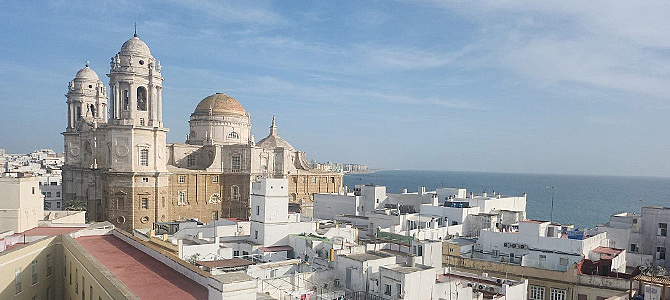
When does the Carnival of Cádiz take place?
The Carnival of Cádiz, declared a Festival of International Tourist Interest, is currently celebrated for ten days, from the Thursday before Ash Wednesday until the Sunday after (Piñata Sunday). Although these are the central dates of the festival, the Carnival of Cádiz actually lasts much longer. Much of the celebration revolves around the carnival groups participating in the Official Competition, preparations for which begin almost as early as September. This period could be considered as the “pre-carnival”, thus extending the festival well beyond the official festival days.
After the Christmas holidays, the streets of Cádiz begin to fill with guitars and kazoos, as the city prepares for Carnival. During the last two weeks of January, four gastronomic events are held to mark the start of the festival: “la Pestiñada“, “la Erizada”, “la Ostionada” and “la Mejillonada”.
“La Pestiñada” kicks off the celebrations, where locals gather in the Plaza de San Francisco to enjoy pestiños and a glass of aniseed. The following day, “la Erizada” is held in the Barrio de La Viña, where the attendees taste fresh sea urchins, a delicacy similar to caviar. Subsequently, “la Ostionada” is held in the Plaza de San Antonio and “la Mejillonada” in the flamenco club “La Perla”, both on the same day.
These gastronomic gatherings are accompanied by the singing of the first carnival groups, such as choirs and chirigotas, which initiate the festive atmosphere and serve as a prelude to the long-awaited performances in the Gran Teatro Falla.
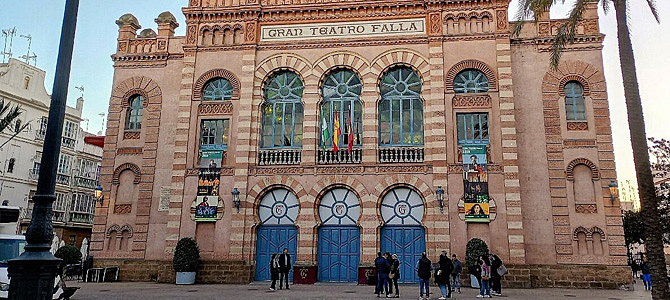
Buy tickets at the Gran Teatro Falla
Tickets for the Gran Teatro Falla are sold online and at the theatre box office, but only a maximum of two tickets can be purchased per person.
There are around 18 qualifying sessions available, and prices vary according to the stage of the competition.
Although it can be difficult to get them, attending the Gran Teatro Falla to see the groups live is a unique experience that we recommend.
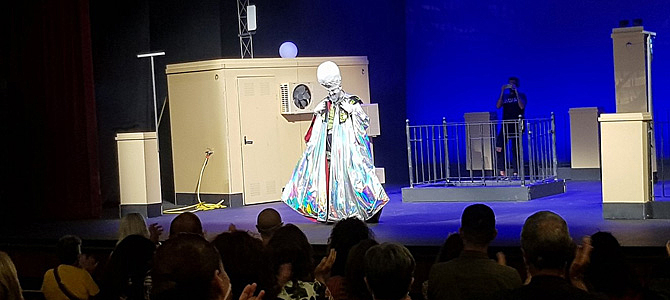
Types of carnival groups
In Cádiz Carnival there are four main types of groups, each with its own style and personality. These are the four categories of participants in the Official Competition of Carnival Groups (COAC).
- Choirs: Large groups made up of between 20 and 40 members, combining voices with stringed instruments. Their songs and costumes are inspired by a carefully crafted staging, often referring to current affairs. Their show is vibrant and full of energy.
- Comparsas: With about 15 people, the comparsas bring the most lyrical and emotional touch to the Carnival. Accompanied by bass drum, snare drum and guitars, they stand out for the depth of their lyrics, full of poetry and feeling, leaving satire and humour in the background.
- Chirigotas: With approximately 12 members, the chirigotas represent the more comic and carefree side of Carnival. Their costumes, songs and performances are full of irony, satirical humour and a mischievous touch that makes the audience laugh.
- Cuartetos: This modality, made up of between 3 and 5 people, largely dispenses with musical accompaniment, limiting itself to the use of the cane whistle and occasionally the occasional stick. Their strength lies in their staging and coplas, which exude mordacity, wit and a unique ability to connect with the audience through humour.
Each of these groups is a fundamental part of the Carnival of Cádiz, contributing diversity and richness to an unforgettable festival.
Illegal” or “street” groups
Two worlds coexist in the Carnival of Cádiz: that of the official groups and that of the “illegal” or “street” groups. The former are the groups which, after participating in the Falla Theatre Contest, take their repertoire to the tablaos set up in squares, hotels and restaurants, offering carefully prepared performances.
On the other hand, there are the “illegal” or “street” groups, which refuse to take part in the official contest. These chirigotas and cuartetos are made up of groups of friends who take to the streets, with no other aim than to amuse and surprise people. Their lyrics are the most irreverent and cheeky of Carnival, full of acid humour and creativity.
These groups travel around the festive map of the city, with the Barrio de La Viña as the epicentre of their activity. There, they perform spontaneously as soon as people gather around them. Their free spirit and their ability to connect with the public bring a unique personality to Cadiz’s Carnival, making them the soul of this great festival.
If you want to experience Carnival in its most authentic essence, we recommend you to discover this type of groups. Without censorship or pre-established scripts, these groups stand out for their creativity, wit, irony and passion. With their art and their rogue touch, they will make you laugh and enjoy an unforgettable experience.
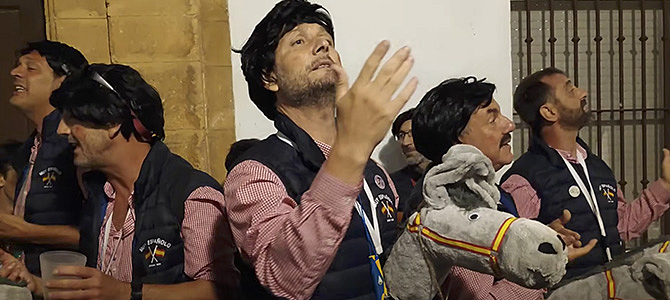
Experience the Carnival of Cádiz
From Saturday morning, the streets of Cádiz are filled with colour, joy and creativity, with thousands of people in costume ready to enjoy Carnival. You can attend the Battle of Coplas in the Central Market, an authentic exhibition of art and humour.
At night, the first prizewinners of the COAC offer their performances in the Plaza de San Antonio and in the Barrio de la Viña, a perfect area to dine and enjoy the atmosphere. In addition, the eagerly awaited Carnival Proclamation is held, marking the beginning of a magical night, full of music and joy.
However, it should be borne in mind that the night also tends to bring crowds and a young public that enjoys drinking, and many head to the municipal marquee to continue the party until the early hours of the morning.
Sunday is another day full of activities, with events such as the Carrousel de Coros and the traditional Cabalgata, which fill the streets of Cádiz with colour and music.
On Monday, a local holiday, there is a decrease in the number of visitors, but the festival continues with events throughout the day.
From Tuesday onwards, the events start in the afternoon and go on into the evening, until the following weekend, when the party is extended again for the whole day.
During this week of Carnival, unique moments take place such as the burning of the god Momo, the burning of the Piti Witch, concerts, fireworks and more carousels. We recommend you consult the annual programme to get organised and not miss any of the details of the festival.
Carnival of the Jartibles
The Carnaval de los Jartibles, also known as Carnaval Chiquito, takes place after the 10 days of the main celebration. During this week, the party is still alive in the city, although with fewer people, mostly local residents. The groups return to the streets to continue singing and offering their satire and criticism of current affairs. The main areas where these performances can be enjoyed are the Cathedral, Plaza de las Flores, San Agustín, Candelaria, Callejones and Pópulo.
The Cadiz Carnival is one of the most emblematic and vibrant festivities in the world, full of history, music, humour and creativity. Whether it’s the official performances or the spontaneous street groups, the Cadiz Carnival offers an unforgettable experience not to be missed.



